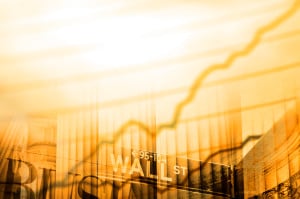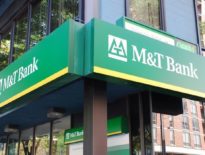The bears are rumbling toward Wall Street.
The stock market’s skid this year has pulled the S&P 500 close to what’s known as a bear market. Rising interest rates, high inflation, the war in Ukraine and a slowdown in China’s economy have caused investors to reconsider the prices they’re willing to pay for a wide range of stocks, from high-flying tech companies to traditional automakers.
The last bear market happened just two years ago, but this would still be a first for those investors that got their start trading on their phones during the pandemic. For years, thanks in large part to extraordinary actions by the Federal Reserve, stocks often seemed to go in only one direction: up. Now, the familiar rallying cry to “buy the dip” after every market wobble is giving way to fear that the dip is turning into a crater.
What’s Bothering Investors?
Market enemy No. 1 is interest rates, which are rising quickly as a result of the high inflation battering the economy. Low rates act like steroids for stocks and other investments, and Wall Street is now going through withdrawal.
The Federal Reserve has made an aggressive pivot away from propping up financial markets and the economy with record-low rates and is focused on fighting inflation. The central bank has already raised its key short-term interest rate from its record low near zero, which had encouraged investors to move their money into riskier assets like stocks or cryptocurrencies to get better returns.
Last week, the Fed signaled additional rate increases of double the usual amount are likely in upcoming months. Consumer prices are at the highest level in four decades, and rose 8.3 percent in April compared with a year ago.
The moves by design will slow the economy by making it more expensive to borrow. The risk is the Fed could cause a recession if it raises rates too high or too quickly.
Target and Walmart each provided anecdotal evidence in their quarterly earnings reports this week that inflation is weighing on consumers, saying they held back on purchasing big-ticket items and changed from national brands to less expensive store brands.
The weak reports stoked concerns that stubbornly rising inflation is putting a tighter squeeze on a wide range of businesses and could cut deeper into their profits.
Other big retailers also have racked up hefty losses.
The data are not entirely consistent. On Tuesday, the market cheered an encouraging report from the Commerce Department that showed retail sales rose in April, driven by higher sales of cars, electronics, and more spending at restaurants.
Investors worry the Fed could trigger a recession if it raises interest rates too high or too quickly. Worries persist about global growth as Russia’s invasion of Ukraine puts even more pressure on prices for oil and food while lockdowns in China to stem COVID-19 cases worsen supply chain problems.
Higher Interest Rates Also Push Stocks Down
Even if the Fed can pull off the delicate task of tamping down inflation without triggering a downturn, higher interest rates still put downward pressure on stocks.
If customers are paying more to borrow money, they can’t buy as much, so less revenue flows to a company’s bottom line. Stocks tend to track profits over time. Higher rates also make investors less willing to pay elevated prices for stocks, which are riskier than bonds, when bonds are suddenly paying more in interest thanks to the Fed.
Critics said the overall stock market came into the year looking pricey versus history. Big technology stocks and other winners of the pandemic were seen as the most expensive, and those stocks have been the most punished as rates have risen.
Stocks have declined almost 35 percent on average when a bear market coincides with a recession, compared with a nearly 24 percent drop when the economy avoids a recession, according to Ryan Detrick, the chief market strategist at LPL Financial.
Bear Markets Take Years to Work Through
On average, bear markets have taken 13 months to go from peak to trough and 27 months to get back to breakeven since World War II. The S&P 500 index has fallen an average of 33 percent during bear markets in that time. The biggest decline since 1945 occurred in the 2007-2009 bear market when the S&P 500 fell 57 percent.
History shows that the faster an index enters a bear market, the shallower they tend to be. Historically, stocks have taken 251 days (8.3 months) to fall into a bear market. When the S&P 500 has fallen 20 percent at a faster clip, the index has averaged a loss of 28 percent.
The longest bear market lasted 61 months and ended in March 1942 and cut the index by 60 percent.
Generally, investors look for a 20 percent gain from a low point as well as sustained gains over at least a six-month period. It took less than three weeks for stocks to rise 20 percent from their low in March 2020.







